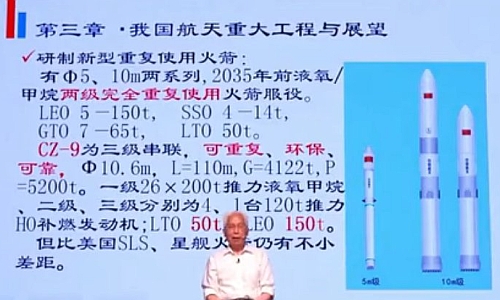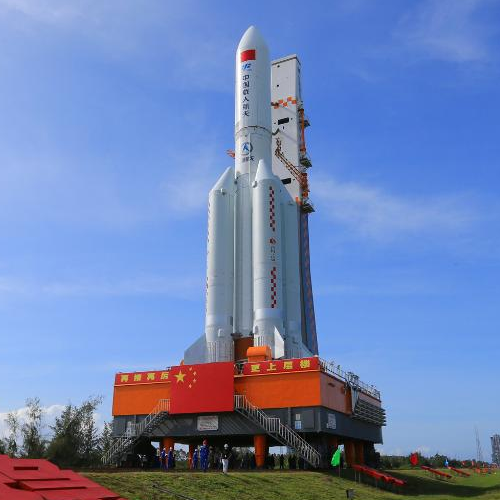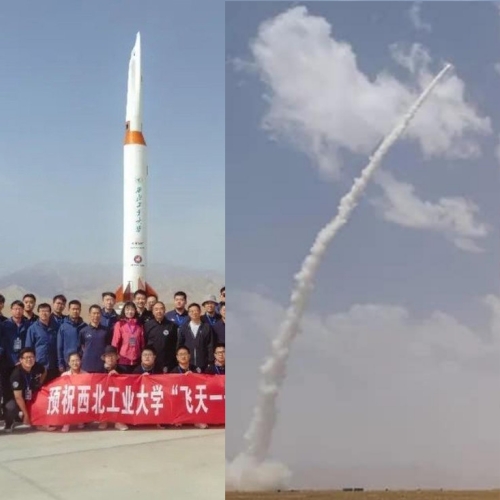China rethinking its proposed heavy lift rocket to make it a Starship clone

Chinese rocket designers appear to be rethinking the proposed design of the Long March 9 heavy lift rocket that China is building, switching from an expendable clone of NASA’s SLS to a reusable clone of SpaceX’s Starship/Superheavy.
The original design had called for three expendable stages and four strap-on expendable boosters using kerosene fuel, and was targeting a 2030 launch. The new design is two reusable stages, with the first having 26 engines fueled by methane, and would launch by 2035.
The image to the right is a screen capture from a presentation given by a long time rocket designer in China, viewable here cued to this point. Note the two large rockets on the right. The smaller is a two stage version, while the larger is a three stage version. Both look remarkably like Starship/Superheavy.

Chinese rocket designers appear to be rethinking the proposed design of the Long March 9 heavy lift rocket that China is building, switching from an expendable clone of NASA’s SLS to a reusable clone of SpaceX’s Starship/Superheavy.
The original design had called for three expendable stages and four strap-on expendable boosters using kerosene fuel, and was targeting a 2030 launch. The new design is two reusable stages, with the first having 26 engines fueled by methane, and would launch by 2035.
The image to the right is a screen capture from a presentation given by a long time rocket designer in China, viewable here cued to this point. Note the two large rockets on the right. The smaller is a two stage version, while the larger is a three stage version. Both look remarkably like Starship/Superheavy.





